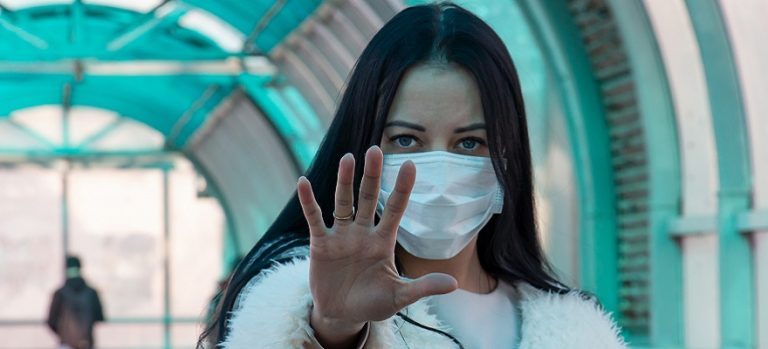Covid-19 vaccinations and boosters have recently come back into the limelight because of three recent announcements. A bipartisan resolution ending the Covid-19 national emergency was signed by President Joe Biden on April 10.
This resolution empowered the government to release funds and suspend several rules in order to combat the epidemic. The White House introduced Project Next Gen, a $5 billion initiative to create the next generation of vaccinations, on the same day that scientists warned that existing therapies were becoming less effective. Additionally, the CDC began allowing new boosters for patients who were immunocompromised and older adults on April 19.
These updates together provide a conflicted picture, acknowledging the Covid-19 danger to certain populations but also moving forward and turning the page. Pediatrician and head of Boston Children’s Hospital’s Precision Vaccines Program Ofer Levy says, “We don’t want to let our guard down and normalize the situation.” On the other hand, we cannot continue to operate in an emergency mode. How therefore can we strike that ideal balance?
That has been a unique issue during the last several years, as technological advancements have been accompanied by unimaginable destruction. On the one hand, the Covid-19 vaccine was created in less than a year and has already completely immunized over 230 million Americans, making it the quickest and largest vaccination program in history.
On the other hand, the United States had more than a million fatalities in what is now the worst epidemic the nation has ever seen. With the introduction of new variations, such as XBB.1.5 (representing 84 percent of U.S. cases as of April 1), Covid-19 is still on pace to be a top-ten cause of mortality this year even if it will no longer be the third-leading cause of death in America in 2022.
The public rightly wants to know exactly what the most recent government regulations on boosters imply for them. So that we could supply the answers, we spoke to medical professionals.
Who needs a booster shot, and when?
The CDC states that those 65 and older may now obtain another booster as long as it has been at least four months after their prior one. Immunostimulants may now be given to immunocompromised people as often as every two months. Notably, all of these boosters are bivalent, which means that 50% of the injection defends against the strain covered by the first vaccination and 50% against the omicron strain.
This strategy is broadly accepted among experts. Levy points out that the most vulnerable individuals should have priority access to the second bivalent vaccine since older persons have death rates that are 60 to 360 times higher and hospitalization rates that are 5 to 15 times higher than those between the ages of 18 and 29. According to Jeremy Faust, an emergency physician at Brigham and Women’s Hospital, “This small population does not build a strong enough immune response to the vaccines to begin with—which is why we’ve needed to boost them more.”
Levy concludes by advising those who believe they are at high risk to talk to their physicians and decide together whether or not to receive the booster—and when to get it. The timing is important since booster effectiveness declines with time, with protection against serious illness leading to hospitalization or death declining from 67 percent at week two to 38 percent at week 20.
Older persons and those with weak immune systems may get a boost immediately away, but they may also seek their doctor’s opinion on the best timing so that “if there’s a really big wave, high-risk people could come in and get another one whenever they want,” according to Levy.
If I’m not elderly or immunocompromised, what should I do?
It’s less certain if younger folks who have had all of their vaccinations should get a booster dose. Levy reiterates the need of being up to date on the most recent CDC guidelines and speaking with your doctor to determine your risk tolerance. In general, however, because of the initial series’ significant protection and the low likelihood of Covid-19 hospitalization among this group, if a person has a good immune system, they may probably avoid the second bivalent booster. As of April 15, the hospitalization rate was less than 2 per 100,000 for all age groups under 65.
Additionally, there is a real risk of imprinting when boosting outside of the CDC recommendations. Imprinting is a less-than-ideal reaction in which “your immune system remembers what it just saw and, therefore, if it sees something different in the future, it may actually be less effective,” according to Faust. To put it another way, frequent boosters may overexpose a person’s immune system to certain viral traits, making it less susceptible to strains lacking those traits. The least danger of imprinting, according to Faust, is in elderly or sick people “because their immune memory isn’t that good.”
The CDC strongly advises individuals of any age who are unvaccinated or who recently got the monovalent booster to obtain a first bivalent booster, even though the majority of Americans are ineligible for a second bivalent booster. Camille Kotton, MD, an infectious disease specialist at Massachusetts General Hospital, advises patients who have received all of their Covid-19 vaccinations but are still concerned about the virus to “ensure that everyone in their household is vaccinated,” particularly if they live with high-risk persons. This tactic, known as cocooning, provides “a layer of protection” for elderly people and immunocompromised people.
How can we handle booster reluctance or ignorance of the most recent recommendations?
While roughly 42% of U.S. adults 65 and older have received a bivalent booster, only about 14% of adults between the ages of 18 and 65 have. Kotton does, however, highlight an important divergence between these two groups with regard to vaccine promotion. Younger and middle-aged persons often have booster hesitation, but elderly adults frequently experience informational gaps.
The bulk of the individuals Kotton encounters in the hospital “have actually not had a booster since September 2022 and actually tell me that they weren’t even aware that they needed to get a booster,” she adds. The CDC’s booster-for-all campaign last autumn may have helped some people, but over time, Faust claims, it lost its impact due to a lack of funding.
To enable people at high risk can make an educated, well-balanced choice, information gaps should be filled in first given the extremely specific audience for this round of boosters. Faust underlines that it is just “a logistical question” to promptly immunize susceptible people. Do you know their names and locations? And do they want to? Are they enthusiastic? Faust claims that the CDC can do more by narrowing its outreach, citing Israel’s success in eliminating pox via focused immunization of immunocompromised people.
For instance, similar to prior Covid-19 partnerships that provide staff infection control training, the CDC might establish alliances with nursing homes and assisted living institutions to disseminate information about the second bivalent booster.
I’ve heard that the Covid-19 emergency designation has been lifted in the US. How does this impact access to boosters?
Most health insurance companies provided cost-free coverage for Covid-19 testing, treatments, and immunizations during the epidemic. After the emergency status is lifted, those with insurance will probably still have their vaccinations covered, but at-home testing and treatment may result in out-of-pocket expenses.
While this is going on, those without insurance or with inadequate insurance, who on average had considerably greater rates of Covid-19 hospitalization and death, may have to start paying for vaccinations, perhaps resulting in their forgoing them. The Biden administration established a $1.1 billion initiative to buy immunizations for those without insurance to allay this worry.
While undoubtedly a positive step, it is unclear whether access issues will be fully addressed given the lack of awareness of this initiative and the fact that it is only temporary. The conclusion of the emergency will make this health insurance issue much worse by removing the government’s need for ongoing Medicaid enrollment.
In other words, just a tiny portion of the anticipated 15 million individuals who will lose their Medicaid benefits will be able to get coverage on the Affordable Care Act marketplace. Minority groups would suffer disproportionately without a more long-term solution, even while temporary fixes can assist assure widespread access to vaccines: Compared to 5.7 percent of non-Hispanic whites, 18.8 percent of American Indian and Alaska Native populations, and 17.7 percent of Hispanic communities did not have health insurance in 2021. As a result, obtaining the boosters may now provide the most challenges for this vulnerable demographic, which Faust believes “deserves the most concern”.
The pandemic’s political aim, which is entirely apart from its medical and social ends, is ultimately what the emergency’s conclusion implies. The dire circumstances we were in sparked a number of very innovative solutions, according to Yale University public health biostatistician Jeffrey Townsend. “The medical establishment will be less able to move quickly without the emergency declaration.”
What do Covid-19 vaccinations have in store for the future?
According to Faust, going the future, the United States may think about launching a new annual autumn Covid-19 booster with a backup spring alternative.



